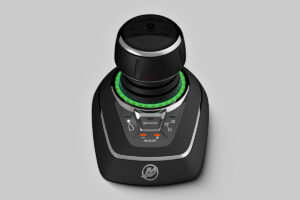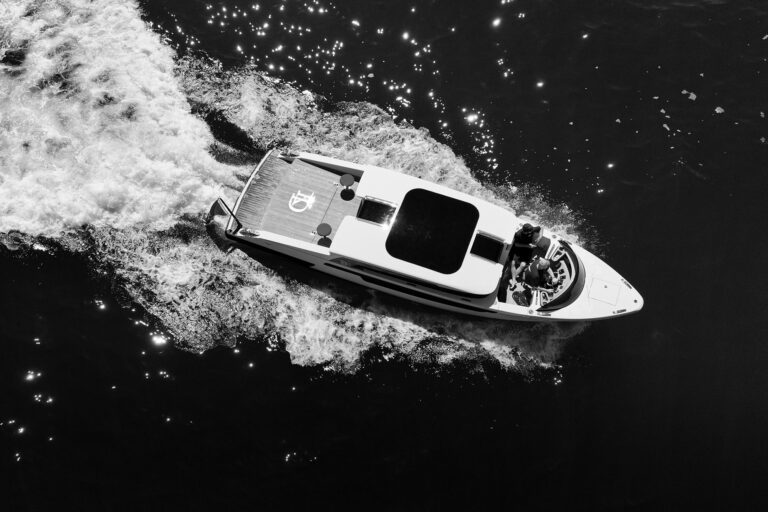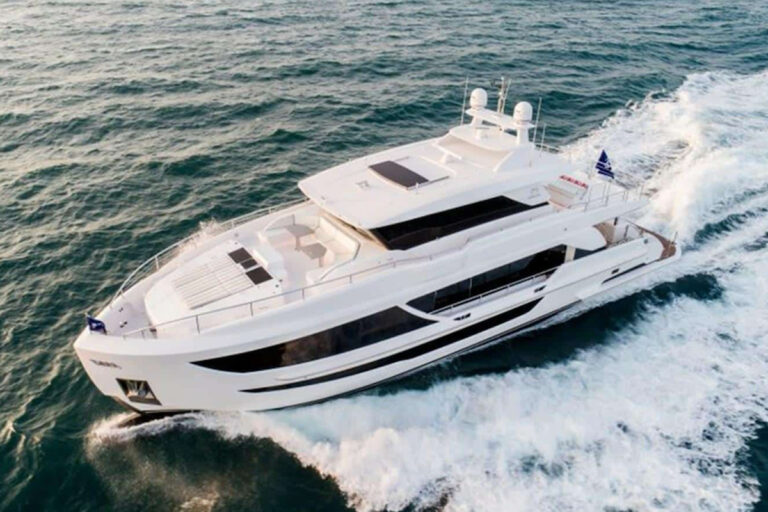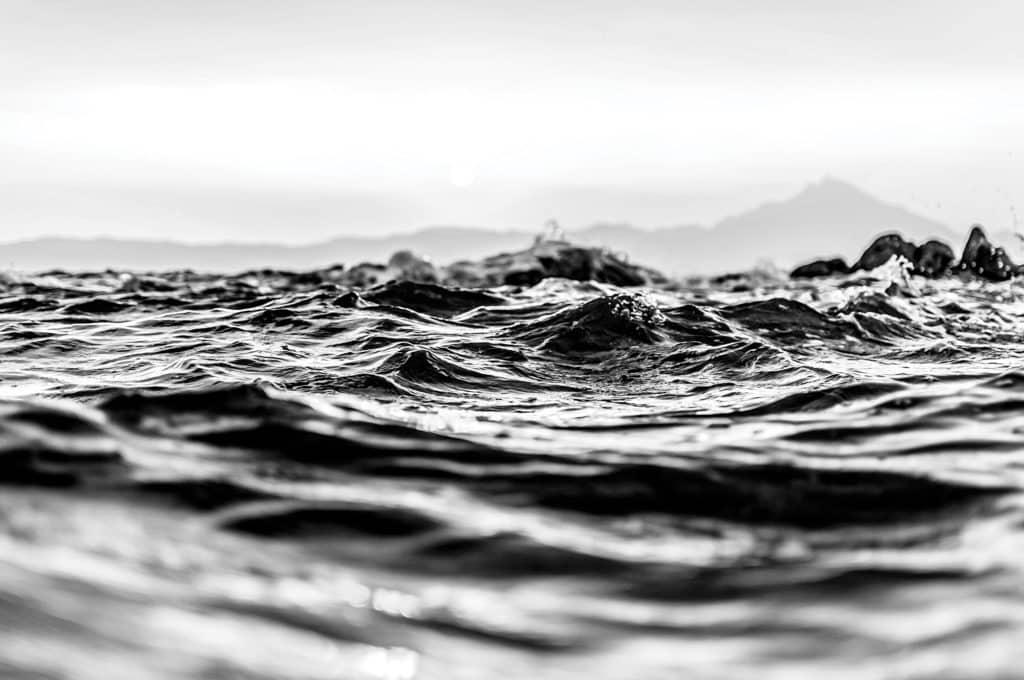
It’s hard to believe, but this year marks my 10th anniversary covering electronics for Yachting. To celebrate, I thought it would be fun to compare two leading marine-electronics technologies—radar and sonar—and see how products that were available during my freshman year have evolved over a decade.
And to do that, we have to go back a bit further in time. While it’s easy to point at the atomic bomb as the technology that decided World War II, historians acknowledge that it was the invention of the cavity magnetron by British scientists—which lead to creating small, field-deployable radio-detection and ranging systems—that truly devastated Axis forces. Raytheon created the first recreational radar following WWII, and yachtsmen soon embraced the technology.
Radars generate pulses of radio-frequency energy and transmit them from a rotating directional antenna, forming each pulse into a narrow wedge. This energy travels at the speed of light and bounces off targets before returning to the antenna as an echo. Radars calculate the range to a target by measuring the time difference between when a signal is transmitted and when its retuning echo arrives; bearing is determined by measuring the radar antenna’s angle when the return is received.
Radar manufacturers started employing digital signal processing in the early to mid-2000s to better differentiate signal from noise.
“Ten years ago, we offered radar with DSP, but the front-end [signal] was still analog,” says Jim McGowan, Raymarine’s Americas marketing manager. “Instead of [traditional] analog filters, we fed the full [analog] signal to the [DSP] computer.”
Other manufacturers took similar steps. Don Korte, Navico’s principal validation engineer, says B&G, Lowrance and Simrad radars from a decade ago were “pulse radars [that] were mostly analog with cavity-resonant magnetrons. The receiver had to track the magnetron.”
Manufacturers revolutionized radar in the mid-2010s when they began replacing magnetrons with solid-state gallium-nitride transistors. Unlike cavity magnetrons, whose frequencies vary over time and with temperature swings, gallium-nitride power amplifiers transmit highly predicable frequencies, simplifying data processing and improving image resolution.

Moreover, while cavity magnetrons transmit peak bursts of RF energy over minute time slices (say, 0.08 microseconds), digital radars transmit lower levels of RF energy as compressed high-intensity radiated pulses. The latter are much like modern sounders, spreading the pulses over longer intervals (say, 100 microseconds). Solid-state transistors also produce better pulse shapes.
“The pulse goes out in one shape, and it comes back as a mirror image,” McGowan says, adding that the radar’s computer overlays these returns and uses algorithms and DSP to filter out noise. “It’s better at delivering target separation…we can do a lot more radar detection with a lot less power.”
Predictable frequencies and chirp transmissions opened the door for Doppler-enabled recreational radars in 2016. Doppler-enabled radars color code targets based on threat level, simplifying what can otherwise feel like a dark art.
“Most people don’t know how to read radar,” says Dave Dunn, Garmin’s director of sales and marketing for marine, adding that with Doppler processing, “if they see red, it’s bad. [Doppler] takes the stress out of it.”
Adjustments with Doppler include collision avoidance, Korte says, and mariners also can adjust their Doppler speed control to determine whether a distant storm is approaching or departing.
While there’s no question that Doppler processing simplifies radar use, Matt Wood, Furuno’s national sales manager, points to solid-state transistors as radar’s biggest gain in the past decade.
“The biggest advantage is that there’s no more magnetron,” Wood says, adding that cavity magnetrons are expensive, consumable parts, whereas solid-state amplifiers last for the life of the radar. “Solid-state transmissions are cleaner, and there’s more of a defined center frequency.” Also, Wood says, solid-state radars consume less power and emit less radiation than cavity-magnetron systems, while putting specific radiated power onto targets.
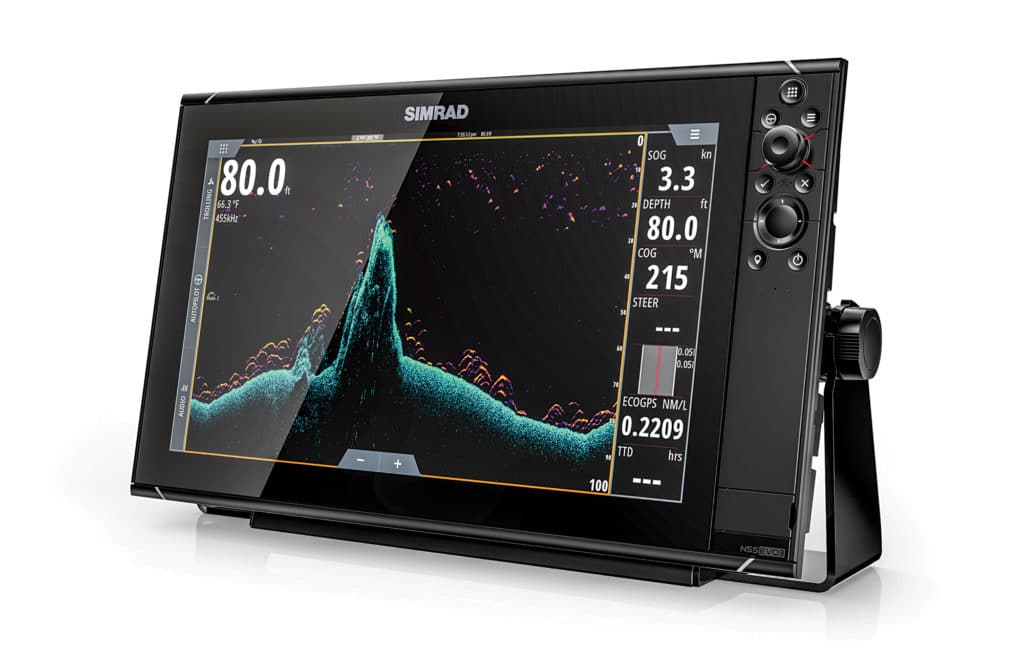
On the display side, older radars offered 8-bit color, while modern multifunction displays have graphically rich, full-color screens. “The radar gives the picture, but the MFD does the interpretation with colors and intensity,” McGowan says.
Moreover, while modern radars digitally process and filter returning echoes in their scanners and stream this data over Ethernet to networked MFDs. Korte says that, in turn, modern MFDs must be capable of processing multiple data streams for dual-range operations.
Moving forward, expect higher-power solid-state radars that are better suited for finding distant birds. “Solid-state radars are equivalent to common magnetron power ratings now,” Wood says. “The next step involves increasing solid-state ratings to exceed how we’ve traditionally measured radar output power.”
The story of sonar’s evolution is impossible to tell without talking about chirp and DSP, however, it’s important to remember that the physics of sonar—namely, harnessing sound propagation to identify underwater targets—haven’t changed.
“A decade ago [side-looking sonar] was in its infancy, [down-scanning sonar] hadn’t been invented yet, and chirp sonar required a [black-box] module and a very expensive transducer in all displays,” says Matthew Laster, Navico’s displays product manager. “Today, all of those things are built into the most basic of displays.”
Moreover, most legacy sonars broadcast on dual frequencies (50 and 200 kilohertz) and employed black-and-white or limited-color displays. However, they typically used DSP to separate signal from noise.
As with radar, Wood says, much of this evolution can be traced back to the trend in the computer-electronics industry of gradually miniaturizing componentry and reducing manufacturing costs. With regards to sonar, this miniaturization and cost competitiveness is evident in chirp-enabled transducers and sonar modules, the latter of which matriculated from downstream black boxes to built-in applications that reside on today’s highly capable MFDs, which themselves have become powerful marinized computers with full-color displays.
Unlike traditional sonars, chirp sonars, which became widely available in 2013, simultaneously transmit over a spread of kilohertz frequencies.
“It’s the rise and fall of the sweep [transmissions] that give chirp sonar its favorable characteristics,” McGowan says, adding that traditional sonar transmissions—when studied on an oscilloscope—look like square-shaped waves and are far better at attaining accurate depth metrics than at identifying water-column targets or discerning bottom structure.
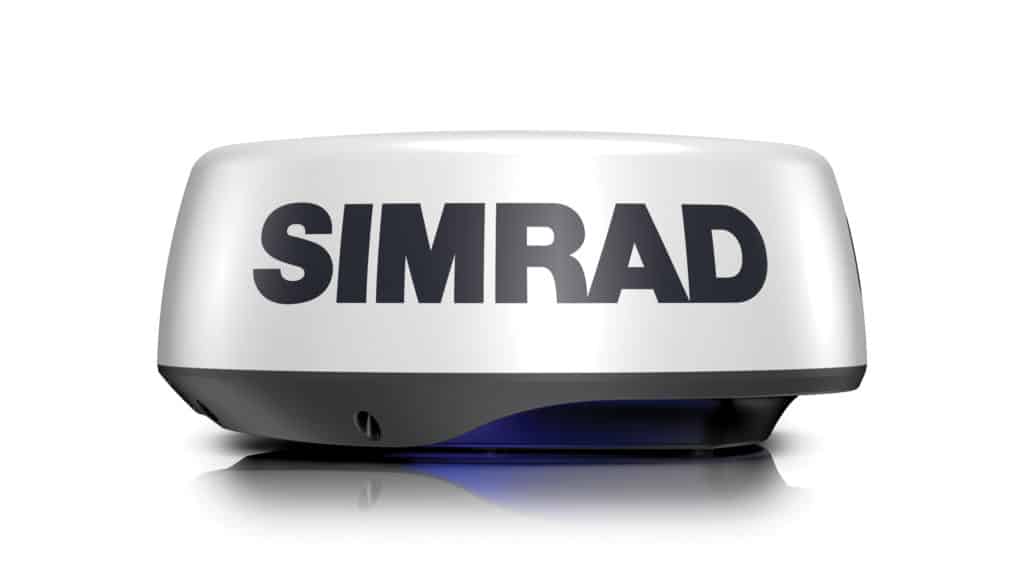
By comparison, “chirp transmissions look like mountain peaks,” McGowan says, adding that modern sonars lay these returning echoes over each other to determine the center of mass in objects that are close together (such as a baitball). Dunn likens traditional sonar to playing a song on a piano with just two keys, while chirp encompasses a music scale’s worth of notes.
“You can play a much prettier song than you can with just two notes,” he says, adding that chirp’s notes “give you much better target separation.”
Wood agrees, adding that “a transducer is to a sounder what a speaker is to a stereo. Chirping is a big deal because you’re looking at one or multiple ranges of frequencies.” Because of this relationship, Wood says, chirp-enabled transducers have played a significant role in sonar’s evolution. In sonar parlance, the Q-factor refers to a transducer’s propensity to ring after its power source is removed. While ideal in acoustic instruments, sonar transducers need to effectively self-mute after each transmission so they are ready to vibrate when the echo returns. Because of this, low-Q factor ceramics and components are fundamental to sonar’s evolution.
Likewise, and given the volume of data that chirp-enabled sonars generate, McGowan points to better, faster processors as another crucial step in sonar’s evolution.
“To get to chirp, we needed DSP to already be there,” he says.
As impressive as chirp technology is for target separation and image clarity, sonar’s evolution didn’t stop there; companies now offer down-, forward- and side-looking sonars that reveal everything from bottom structure to water-column targets and thermoclines. Moreover, some manufacturers now offer sonars that chirp on megahertz frequencies to yield picturelike sonar imagery of shallow soundings. There are also sonars that scan entire areas, rather than just pinging.
“As a kid, I used fathometer paper,” Dunn says. “Now, I can see fish swim up to the line and hit my bait.”
Expect even more refinement of single-frequency and multifrequency transmissions, multibeam technologies, and wide-beam sonar. Also, Wood says, “people want a [compact, high-power,] forward-looking array for safety on approach…that gives a range that’s five to six times the depth [in deep water]. But nobody’s there.” Yet.




